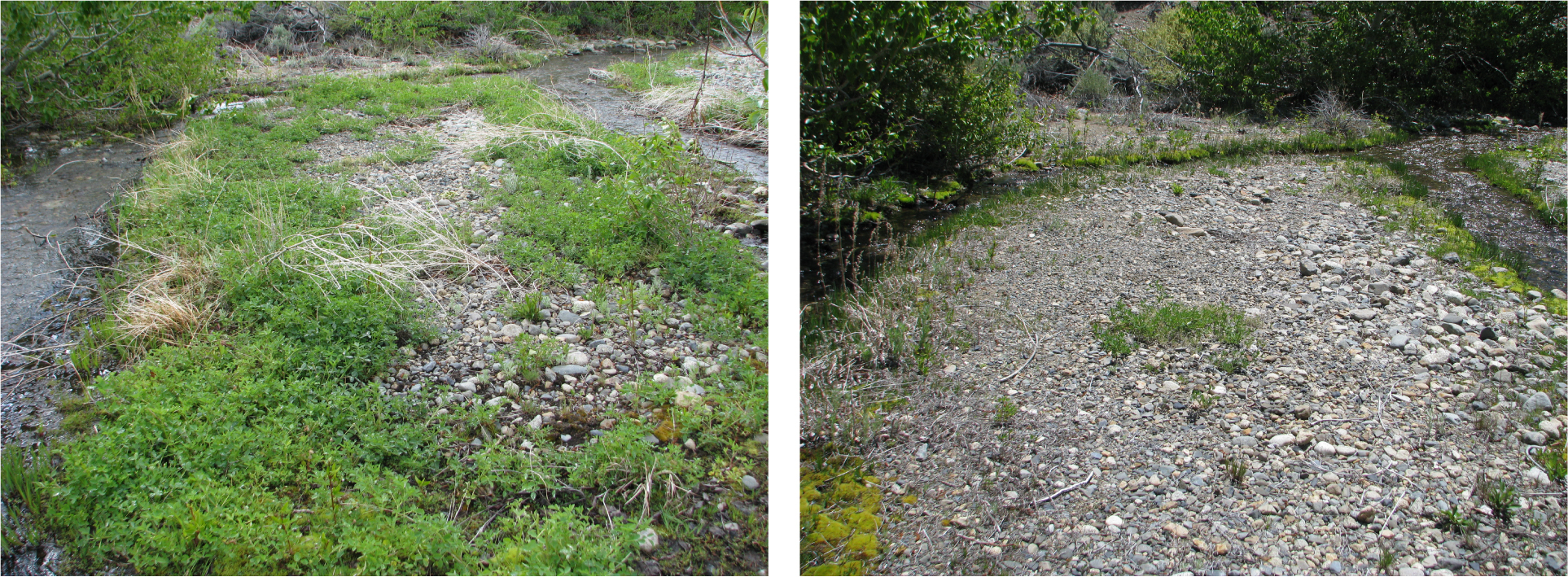
On May 18, 2015 I wanted to assess the types and quantities of invasive plants that were present at Mill Creek. Melilotus albus (sweet clover) was quickly identified as the most prolific and abundant invasive plant species present along Mill Creek, which I documented with GPS points and photos. With the help of volunteers and school groups, we were able to remove over 730 pounds of sweet clover from Mill Creek in 2015 from mid-June to mid-August by manually pulling and clipping the invasive plants. Now in 2016 the difference is noticeable.

Areas of Mill Creek where we focused sweet clover removal efforts in 2015 are now showing native plants retaking the prized riparian habitat in 2016 (as demonstrated by the photo above), which is exactly what we want to be seeing.
Unfortunately, we can’t take all the credit. Seasonal variation has a big impact on what plants dominate a landscape year to year and compared to the last three years, we had much more snow this year. That snow probably helped a lot with inhibiting sweet clover growth and development. But I believe with continued efforts, we are giving the native plants a chance to secure their place along Mill Creek for years to come.
Special thanks to outdoor clothing company Patagonia Inc. for their support of the Mono Lake Committee’s restoration stewardship program.

Hi Robbie, what was your technique for removing the sweet clover? It has really expanded in Swall Meadows after the fire.
thanks,
Karen
Karen,
Our methods included hand pulling the plant including the roots and hand clipping close to the soil. If the infestation at Swall Meadows is along the creek, I might recommend these methods, despite them being fairly time intensive. However, if the infestation consists of fairly uniform patches, you might consider mowing or using an herbicide.
I’d be happy to offer any consultation if interested. It would be helpful to see some photos of current conditions. Feel free to email me at Rob…@monolake.org
– Robbie